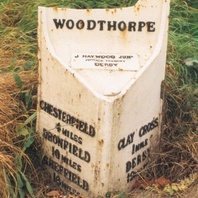
Viking Names
Woodthorpe
Woodthorpe, in the Scarsdale Hundred of Derbyshire, is an Anglo-Scandinavian hybrid name from Old English wudu ‘a wood; or wood, timber’ and Old Norse þorp ‘a secondary settlement, a dependent outlying farmstead or hamlet’.
Read More
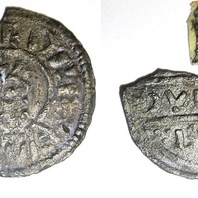
Viking Objects
Coin of Burghred of Mercia (1989-58/3650)
A silver penny of Burghred of Mercia, found in the mass grave at Repton, minted by the moneyer Dudwine. Dudwine may be the same moneyer who was minting coins for Alfred the Great at a later date. Burghred was king of Mercia from 852-874 CE. He was driven out of Mercia by the Vikings during their march from Lindsey to Repton in 874 after they sacked Tamworth. Burghred fled to Rome, where he eventually died, and was replaced by Ceowulf II who was loyal to the Vikings. Minting coins was a way of controlling the means of exchange within a kingdom and which created a more easily administered standardized system of trade. Moreover, the coins themselves were often used as propaganda, portaying symbols and statements that gave off a desired message. The Vikings later used the minting of coins to legitimize their own rule.
Read More
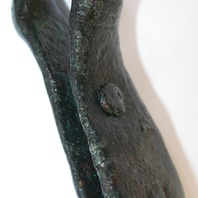
Viking Objects
Suspension Loop (1985/225-1)
This copper-alloy suspension loop was found in Mound 1 at Heath Wood, Ingleby and was probably part of a sword belt. The loop is wide enough for a doubled strap to pass through, so it may have been used to suspend the scabbard from the belt. It has been suggested that this one was probably Anglo-Saxon in origin, because this style is not known from Scandinavia, but that did not stop a Viking acquiring it and being buried with it.
Read More
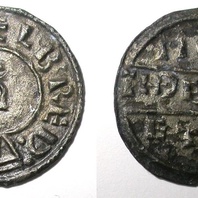
Viking Objects
Coin of Alfred the Great (1989-58/3386)
A silver penny of Alfred the Great, found in the mass grave at Repton, was minted by a moneyer called Tidhelm in London. Alfred was King of Wessex from 871 to 899 and spent most of his reign fighting off Viking invasions. He won a decisive victory at the Battle of Edington in 878 which resulted in a peace with the Vikings and the creation of the Danelaw. Minting coins was a way of controlling the means of exchange within a kingdom and which created a more easily administered standardized system of trade. Moreover, the coins themselves were often used as propaganda, portraying symbols and statements that gave off a desired message. The Vikings later used the minting of coins to legitimize their own rule.
Read More
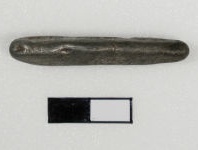
Viking Objects
Silver Ingot (2010-195)
Ingots of this size and shape were used as a convenient way to store and carry silver in the Viking Age. They might be cut up into pieces (hacksilver) to be used as bullion for payments, or be processed into jewellery. Analysis of silver ingots from this period shows that many were made from silver mined in the Middle East. This silver was probably originally used to mint Arabic dirhams (a type of coin) but was melted down by the Vikings to make it more easily portable.
Read More

Viking Names
Sturston
Sturston, in the Appletree Hundred of Derbyshire, comes from the Old Norse male personal name Stýrr and the Old English element tun ‘farm, settlement’. It is thus a hybrid name. The Domesday Book mentions Sturston Hall as one of two manors held by Ulfkil ‘Ulfkell’ and Wudia ‘Wodi’, each manor being of half a carucate (a Danish land measure) each. Parts of the parish were transferred to Bradley and Offcote and Underwood and the rest to Ashbourne in 1934.
Read More
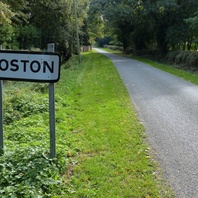
Viking Names
Foston
Foston, in the Appletree Hundred in Derbyshire, has a difficult naming history. The form of the name in Domesday Book, Farvlvestvn, seems to be from the Old Germanic male personal name Farulf with the second element Old English tun ‘farm, settlement’. It is believed that Foston, from the Old Scandinavian male personal name corresponding to the Old Norse male personal name Fótr, was originally a separate settlement site which in the course of time became more important than Farvlvestvn and displaced this name. Alternatively, the name Farulfr was common in Swedish and the first element in the Domesday form of this place-name may well be this Scandinavian name. Foston is a joint parish with Scropton.
Read More
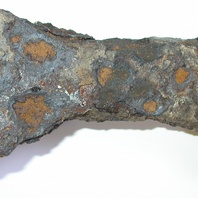
Viking Objects
Iron Axe-head (1989-58/3296)
Axes were not only a common implement used for a variety of wood based activities, such as constructing ships, but also were often used as weapons. Axes came in a variety of shapes and sizes depending on their function. This one was made to be a weapon and would have been wielded with a single hand. It was found at Repton in Derbyshire where there was a Viking camp which was recorded in the Anglo-Saxon Chronicle under the year 873/4.
Read More
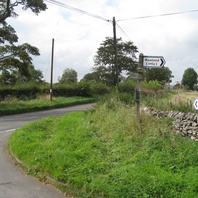
Viking Names
Rowland
Rowland, in the High Peak Hundred of Derbyshire, is a Scandinavian compound from Old Norse rá and Old Norse lundr ‘a small wood’. It is difficult to determine if the first element rá either means ‘a roe, a roe-buck’ or ‘a land-mark, a boundary’. The forms also show the common replacement of lundr with land which also happened in Hasland, Derbyshire.
Read More
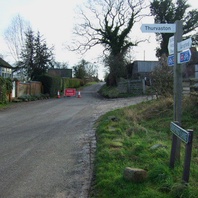
Viking Names
Thurvaston
Thurvaston, in the Appletree Hundred of Derbyshire, comes from the Old Norse male personal name Þurferð and the Old English tun ‘farm, settlement’. It is thus a hybrid name. The same personal name appears in Thoroton in Nottinghamshire. This personal name normally appears in Scandinavian sources in its contracted form, Þórðr, while the full form appears in runic and other sources in Sweden. Thurvaston is a joint parish with Osleston.
Read More
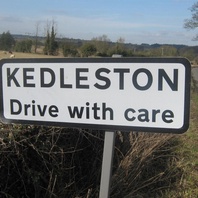
Viking Names
Kedleston
Kedleston, in the Appletree Hundred of Derbyshire, is a hybrid formation of the common Old Norse male personal name Ketill and the Old English element tun ‘farm, settlement’.
